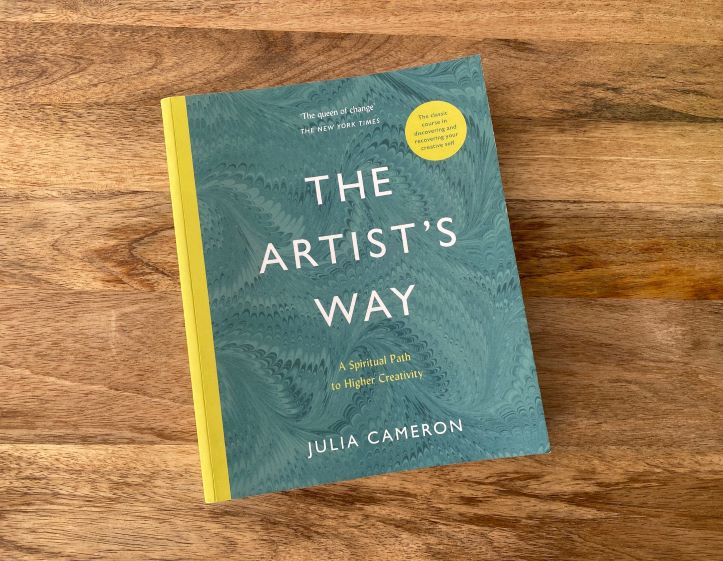The world of creativity is as vast as the ocean, filled with deep currents that sometimes steer individuals toward pathways of self-discovery and fulfillment. Among the myriad of resources dedicated to unleashing this creative spirit, “The Artist’s Way” by Julia Cameron stands as a beacon for those seeking to delve into their artistic depths. First published in 1992, this seminal work serves not only as a guide to artistic expression but also as a transformative journey towards personal growth and self-awareness. The influence of this book is profound and enduring, leaving a significant imprint on both emerging and seasoned creatives alike.
At its core, “The Artist’s Way” addresses a common observation: many individuals harbor a buried desire to create, yet find themselves paralyzed by self-doubt and societal expectations. The disheartening reality is that the creative instinct in many has been stifled by a plethora of external factors—such as work obligations, critical feedback, and the relentless pursuit of perfection. Cameron recognizes this struggle and provides a comprehensive framework to reconnect with the inherent creativity each person possesses.
One of the most pivotal concepts introduced in the book is the idea of “morning pages.” This ritual involves writing three pages of longhand, free-flowing thoughts every morning. On the surface, it might appear simplistic, even burdensome to some. Nonetheless, this daily practice serves as a powerful cleansing mechanism, allowing individuals to clear their minds of clutter and apprehensions that hinder creative flow. It acts as a psychological exorcism, expelling negativity and fostering a conducive environment for creative exploration.
Moreover, Cameron’s approach is underpinned by a remarkable analytical depth. She astutely observes that the barriers to creativity often stem from deeply entrenched beliefs about self-worth and success. This revelation is crucial—it reveals that the creative process is not merely an artistic endeavor; rather, it is an intimate journey of introspection. Those who engage with the exercises presented in “The Artist’s Way” are invited to confront limiting perceptions and cultivate a more nurturing relationship with themselves.
In each chapter, Cameron introduces themed tasks and exercises designed to provoke thought and inspire action. These tasks are as varied as they are enlightening, encompassing everything from brief meditative reflections to more substantial explorations of one’s past experiences with creativity. The format encourages readers to reflect upon their relationship with art and creativity, often unraveling the intricate tapestry of fears and expectations that have woven themselves into the fabric of their lives.
A key to unlocking this paradigm shift is Cameron’s notion of the “artist date”—a dedicated time each week for individuals to engage in activities that nourish their creative spirits. This practice lends weight to the assertion that creativity flourishes when individuals embrace exploration and curiosity. It empowers readers to step beyond their comfort zones, fostering a playful mindset crucial for innovative thinking. In a culture that often prioritizes productivity and efficiency, the artist date is a gentle reminder of the importance of leisure in the creative process.
Examining Cameron’s work through an analytical lens also reveals an underlying critique of contemporary societal frameworks that often discourage artistic pursuits in favor of more conventional career paths. The book implicitly questions these norms, highlighting the necessity for individuals to reclaim their creative instincts as a vital component of their identity. This theme resonates deeply in today’s fast-paced world, where the soul-crushing treadmill of everyday life can lead to a disconnection from one’s innate passions.
The themes of rejuvenation and reclamation present in “The Artist’s Way” pinpoint why this book continues to fascinate generations of readers. People are often drawn to the promise of rekindling a lost flame of passion within themselves—whether it be for writing, painting, music, or any other form of artistic expression. Cameron’s narrative is not just a call to creativity; it is an invitation to embark on a rediscovery of self, where art becomes a conduit for authentic expression and emotional healing.
In addition, the book acknowledges the existential fears that accompany creative expression. The fear of failure, the fear of judgment, and the ever-looming specter of comparison haunt most individuals wishing to create. Cameron adeptly normalizes these fears, encouraging vulnerability while emphasizing that they should not be insurmountable barriers. Recognizing that discomfort is intrinsic to the creative process allows individuals to transform their fears into catalysts for growth.
Ultimately, “The Artist’s Way” is more than just a guide for artistic development; it is a manifesto advocating for a profound reconnection with one’s authentic self. It gently urges readers to sift through the rubble of societal expectation, unearthing the precious gems of creativity buried within. Cameron’s analytical insights and compassionate guidance extend an olive branch to anyone who has ever felt the clutches of self-doubt or the weight of unfulfilled potential.
In conclusion, “The Artist’s Way” emerges as an unavoidable touchstone for those seeking to unlock the door to their creative spirit. Cameron’s compelling framework, enriched with pragmatic exercises and reflective encouragement, serves as a powerful reminder that creativity is an essential facet of the human experience. As readers immerse themselves in its pages, they are invited not only to embrace their artistic aspirations but also to embark on a transformative journey towards a more vibrant, fulfilling life. Reclaiming creativity isn’t just an individual pursuit; it is an act of re-establishing a connection with the world and with oneself—a journey worth undertaking.
